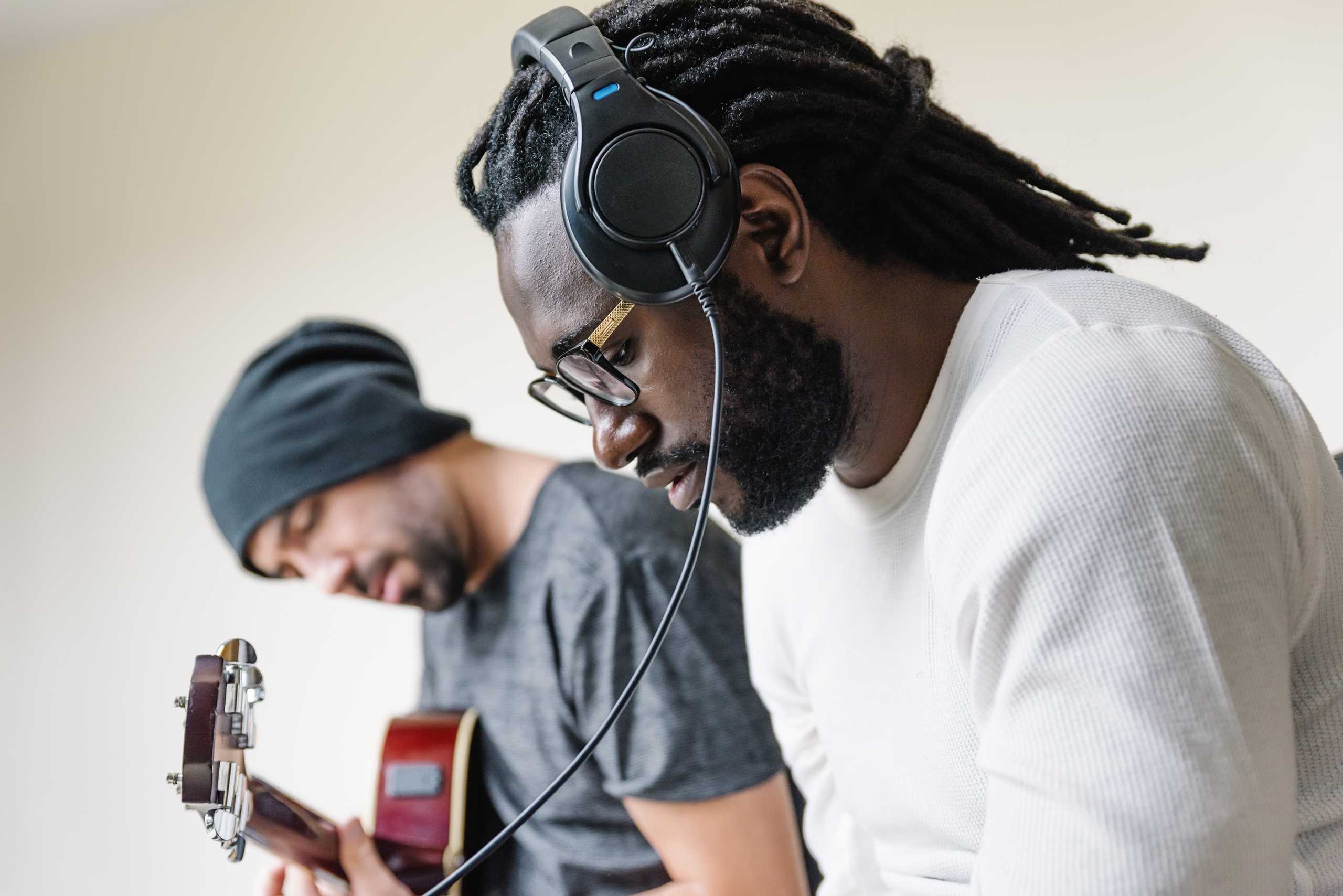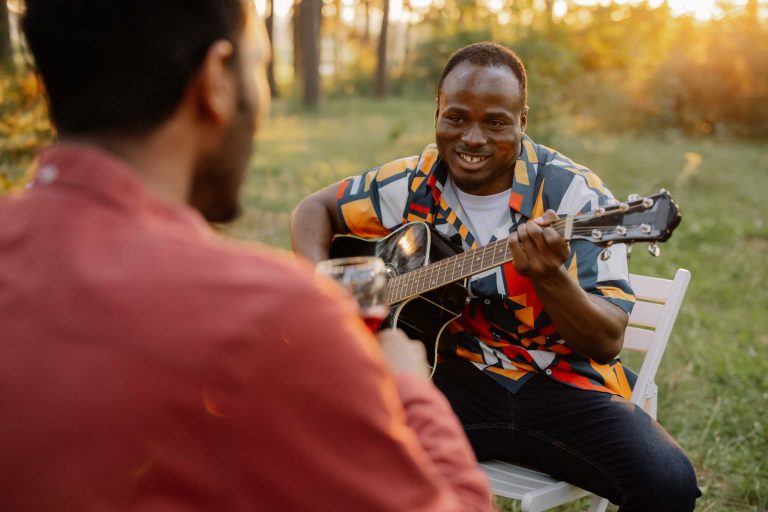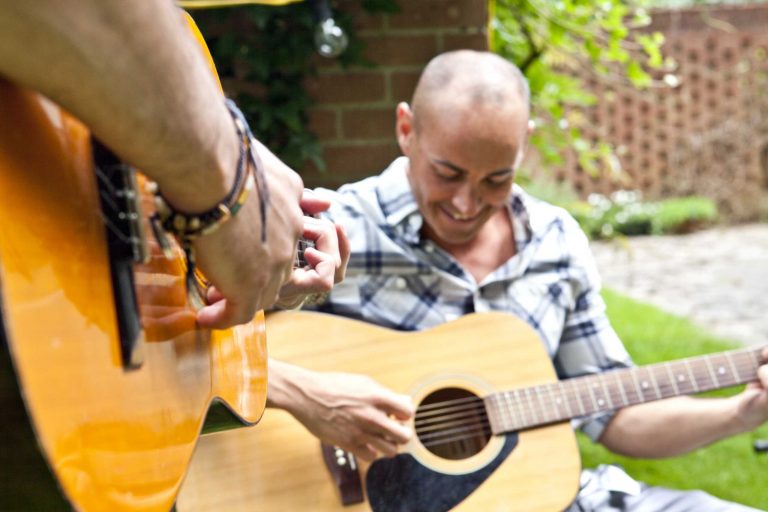
Playing the guitar is not only about following lessons—it’s about discovering your own sound. Developing a personal style makes your music unique and keeps the learning process exciting.
1. Explore Different Strumming Patterns
Strumming is the heartbeat of guitar playing:
- Experiment with upstrokes, downstrokes, and combinations.
- Try syncopated rhythms to make songs feel dynamic.
- Match your strumming style to the mood of the song.
Changing strumming patterns adds variety and emotion to your music.
2. Experiment with Fingerpicking
Fingerpicking creates a rich, melodic texture:
- Start with simple patterns using thumb and first two fingers.
- Gradually incorporate all fingers for more complex melodies.
- Practice alternating bass lines to support chords.
Fingerpicking allows you to blend melody and harmony, creating a fuller sound.
3. Improvise Simple Melodies
Improvisation develops creativity and confidence:
- Use scales like the pentatonic or major scale to guide note choices.
- Start with short melodic phrases and gradually expand.
- Don’t worry about mistakes—they often lead to new ideas.
Improvising trains your ears and hands to work together naturally.
4. Mix Chords and Melodies
Combining chords and melody enhances musical expression:
- Play a chord progression while adding a small melody on top.
- Experiment with different timing to create interesting textures.
- Practice soloing over your own chord patterns.
This technique develops musicality and gives your playing a professional feel.
5. Use Dynamics and Expression
Volume and intensity make your playing expressive:
- Strum or pick softly and loudly to create contrast.
- Add pauses or accents to emphasize certain notes.
- Explore vibrato, slides, and hammer-ons to make melodies expressive.
Dynamics help communicate emotion and make your playing more engaging.
6. Record Yourself and Reflect
Hearing your own sound helps you refine it:
- Record practice sessions to identify strengths and weaknesses.
- Experiment with different tones and techniques.
- Compare recordings over time to track progress and development.
Recording allows you to hear subtleties and discover your unique style.
7. Stay Curious and Play for Fun
The most important tip is to enjoy the process:
- Explore different genres and learn new songs.
- Play along with favorite recordings to inspire creativity.
- Share music with friends or a community for feedback and motivation.
Curiosity and enjoyment are what transform a beginner into a confident and expressive guitarist.
By experimenting with strumming, fingerpicking, improvisation, and dynamics, beginners can start creating a personal guitar sound. The journey is as much about self-expression as it is about learning notes and chords, and every small experiment brings you closer to your unique musical voice.



